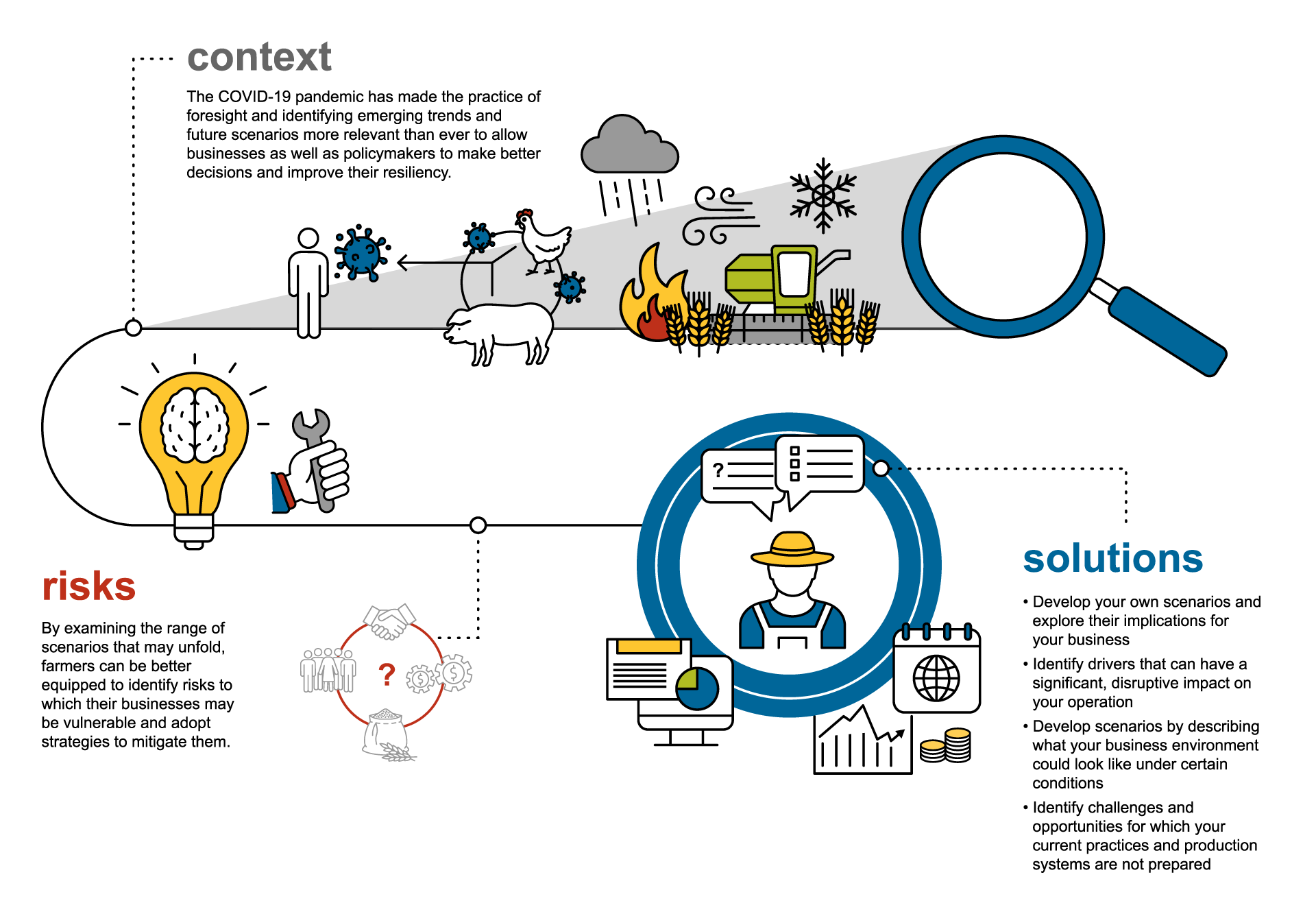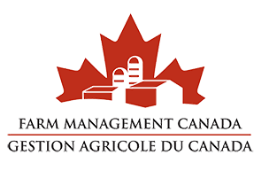Category: Management | Topic: Business Management
Posted Date: November 11, 2021

The context
It has been over a year since Coronavirus was declared a global pandemic, and everyone, including farmers, have been intimately affected by disruptions to their work and home life.
What have we learned? And, how can we use our insights to emerge with a reasonable plan for the future?
THE PRACTICE OF FORESIGHT
The COVID-19 pandemic has made the practice of foresight more relevant than ever. In short, foresight uses a wide array of tools to identify emerging trends and future scenarios, in turn allowing businesses as well as policymakers to make better decisions and improve resiliency.
As the OECD puts it, the objective of foresight is not to “get the future right”. Rather, foresight allows us to explore the range of plausible outcomes that should be taken into consideration when planning for the future.
THREE DIFFERENT SCENARIOS TO CONSIDER FOR 2023
The federal government has an entire team dedicated to foresight, called Policy Horizons Canada (PHC). In the summer of 2020, PHC conducted a foresight exercise on the potential shifts and implications of COVID-19 for many aspects impacting our daily lives, including our health, the economy, and the environment.
Through their analysis, PHC identified three very different scenarios that could arise by 2023:
- Scenario 1: A world in which public health has recovered, but the economy has not
- Scenario 2: A world in which an emergency state is the new normal
- Scenario 3: A world in which social connection provides resilience through the crisis
Note: These scenarios are designed to stimulate thinking of what is possible, not to predict the future. They should not be considered as the Government of Canada’s official COVID-19 scenarios.
What does it mean for farmers?
As we analyze the past year and its lingering impacts going forward, how should farm businesses plan for the future and possible “new normal?”
Sound business practices are the foundation for success for any farm. Having a plan in place provides comfort when facing internal and external disruptions, stress runs high and decision-making becomes clouded.
- Take time to develop or review your farm’s strategic plan to manage risk and seize opportunity.
- Consider revisiting your vision, mission and values, and involve family and employees in the discussion. You are more 42% more likely to achieve goals that are written down and shared with others. Now is also a great time to conduct a SWOT Analysis – to review the Strengths, Weaknesses, Opportunities, and Threats related to your business.
Foresight can provide farmers with an additional tool to broaden their perspective on what the future might hold and take steps today to reduce the associated risks. Reflecting on the potential implications of these scenarios can be an additional tool for farmers to improve their resiliency. Indeed, through opening the range of possible scenarios that may unfold, farmers can be better equipped to identify risks to which their businesses may be vulnerable and adopt strategies to mitigate them. Reviewing and reflecting on the three Scenarios developed by PHC’s experts can thus be part of a comprehensive assessment of your risks.
PHC identified numerous underlying trends that could drive and result in the above scenarios. Among the trends described in the report, we picked two that could have implications for your business and identified some questions you could start reflecting on today.
- The pandemic could have long-term impacts on our mental health
- What would be the implications if you or your employees’ mental health deteriorate significantly?
- What are the tools that you could implement in the short to medium term to support your own mental health and that of your employees?
- We could see a greater desire around the world to tackle climate change
- What are the steps towards the environmental sustainability of your business and operations that you are currently taking? Are these sufficient to meet your stakeholders’ expectations?
What can farmers do?
- Develop your own scenarios and explore their implications for your business, by identifying change drivers that can have a significant, disruptive impact on your operation.
- Develop scenarios by describing what your business environment could look like under the given conditions.
- Identify challenges and opportunities for which your current practices and production systems are not prepared.
- Develop contingency and emergency preparedness plans for overcoming disruptions that impact your business including human resources, animal health and welfare, disruptions in the supply chain, and financials setback and opportunities.
- Develop enterprise budgets specific to your operation including best case, worst case and most likely case scenarios.
- Know your cost of production and track expenses and investments carefully to ensure you can weather market disruptions.
- Hold family and farm team meetings on a regular basis to track progress and trigger contingency measures if circumstances change that impact your plans. Meet with your farm business advisory team on a regular basis.
- Network with your peers. Share successes and challenges.
- Utilize the management tools and resources contained within the National Farm Business Management Resource Centre at takeanewapproach.ca
Farm Management Canada also has some great resources to help you analyze and build the foundation of your business.
AGRISHIELD: A WEB-BASED PLATFORM FOR A COMPREHENSIVE ASSESSMENT OF YOUR RISKS
In an uncertain world, a holistic approach to risk management is key for the success of farming enterprises. AgriShield® is a web-based platform that guides a comprehensive assessment of the risks and provides resources to help farmers manage risk better.
BUILDING AN EFFECTIVE FARM MANAGEMENT SYSTEM: GUIDEBOOK AND MANAGEMENT MANUAL
The Guidebook provides farm businesses with an implementation path for building and maintaining sound business practices and a management system that will ensure effective business and personal relationships, enable the business to achieve its intended mission, philosophy, and key objectives, and in turn, position the farm for future success.
The global pandemic has revealed that agriculture is an essential industry, and farmers are resilient. While we celebrate these successes, it’s also important to reflect on what we could have done differently to manage risk and maximize opportunity. Moving forward, farms that use foresight and put business practices in place to reduce uncertainty will be better positioned for continued success.
 Skip to main content
Skip to main content
